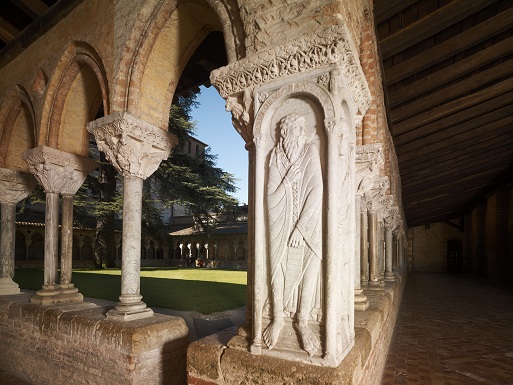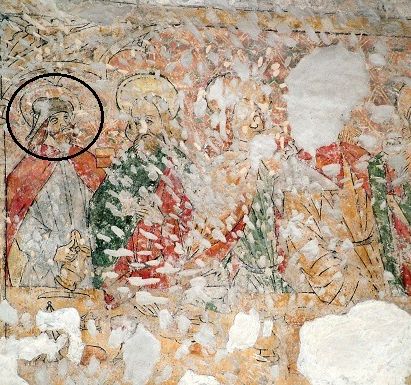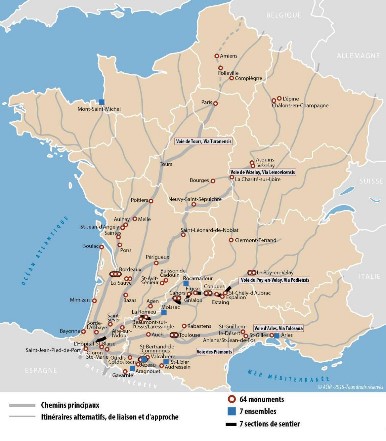
The abbey of Moissac is considered as a masterpiece of the Romanesque art, and thus registered to the UNESCO World Heritage since 1998 as part of the French roads to Santiago de Compostela. Many pilgrims come every year to visit the abbey complex as it is a must-see.
UNESCO World Heritage
UNESCO (United Nations Educational, Scientifical and Cultural Organisation) was created right after the Second World War, with the creation of an international movement to preserve heritage as purpose. From the war’s destructions emerged an awareness about the universal value of heritage and the need to preserve our ancestors’ legacy to pass it onto the future generations.
During the years 1960-1970 were achieved many international operations, some receiving of lot of media attention such as Abu Simbel Temple or Venice in Italy. This allowed the local and international knowledge to progress, made emerged the idea of common heritage of mankind and paved the way for the World Heritage Convention in 1972.
Since then, the Convention for the Safeguarding of the World Cultural and Natural Heritage defines natural and/or cultural sites that deserves to be registered on the World Heritage List.
Those registered sites are invested of an Exceptional Universal Value. Their loss would be irreplaceable for cultures, civilizations and human environment understanding.
Each nation who signs the Convention commit itself to guarantee the proper conservation of World Heritage sites on its territory and cooperate at international level to help safeguard heritage. Signatory nations are encouraged to raise public awareness of the values of World Heritage properties and improve their protection through education and information programmes.
In 2020, 1121 sites in all the world were registered as Word Heritage. 45 of them are in France, among which the French roads to Santiago de Compostela.
Past and present roads to Santiago de Compostela
Pilgrimage exists in all religions. In the broad sense it is a travel toward a sacred place where a contact with divine is thought to be possible. The said place can be many things: natural environment, temple dedicated to a deity, place sanctified by someone’s presence and/or actions or even a burial site. For Christianism, pilgrimage is specifically to travel toward a holy place or a sanctuary, which means a church owning relics.
Jerusalem, Roma and Santiago de Compostela are the three most important places among the great Christians centres. Saint James’ relics were discovered during the 9th century and his pilgrimage is at is apogee between the 12th and 15th century.
However, the medieval pilgrimage is very different from the one we know nowadays. In fact, pilgrims don’t go to one sanctuary, every single church on the way can be a potential step on their way. So, medieval pilgrims are seeking first to join great and busy roads to avoid being robbed, ford rivers and bedstop in cities closed at night. A significant amount of them is actually going to Santiago de Compostela by boat.
The French renewal of the Roads to Santiago de Compostela started in the 50’s, driven by the French Company of Friends of Santiago de Compostela. Its historians and archivists rediscover the Codex Calixtinus, a text preserved in Santiago de Compostela but not widely distributed in the Middle Ages. Its anonymous author describes 4 French roads, all starting in a great sanctuary: Saint-Martin de Tours, La Madeleine de Vézelay, Notre-Dame du Puy and Saint-Gilles du Gard. Those 4 roads, originally literary and symbolic, became real when the trail roads were marked from the 1970’s.
The 2nd December 1998 was registered to the World Heritage 71 monuments, including 7 monumental complex and 7 trail sections. All witness the many aspects of pilgrimage: spiritual ones, material ones and also the medieval context. Those elements are widespread among 10 regions, 32 departments and 95 communes (regions, departments and communes are administrative divisions of the French territory) and chosen to represent the geographical extent of pilgrimage, without fully reconstructing it. The chosen sites are showing a wide variety of architectural styles, design solutions or examples of furniture devoting the saints.
Moissac and Compostela
A text, dated from the 12th century, gives the inventory - quit long – of all the relics possessed by the Abbey of Moissac, including the ones of Saint Peter. Those were probably shown in the alcove of the capital dedicated to his martyr in the cloister. It is very likely that the abbey was in itself a place of pilgrimage for the worshippers, though the impact of the phenomenon is unknown. Moissac is indeed mentioned as part of the Way from le Puy-en-Velay but archives and current knowledge says nothing about the importance of the pilgrimage to Santiago de Compostela.
Nonetheless, Saint James is sculpted next to his brother John on one corner pillar of the cloister, shown as un apostle, barefoot, wearing a chasuble and holding a phylactery. It’s the most ancient representation known of him in Moissac. It’s not the only one as the Saint-Martin church shelters mural paintings from the 15th century where the apostle wears his pilgrim’s clothes. Some scallops’ shells ware found inside the graves around the church and they were likely the property of pilgrims. Last but not least, the abbey church houses a wooden statue of the 17th century were the coat and hat of Saint-James are adorned with the famous shell.


There was also a brotherhood dedicated to Saint James the Major, created the 25th July 1523. Among other places, the brotherhood used to use the Saint-Jacques church of Moissac and we can follow their history up to 1671. They had the specificity to welcome only formers pilgrims who can prove their achievement with any document showing how far they have gone. In addition, every 25th July (day of Saint James), brothers assemble themselves with hats and staffs. Then they make a common procession with the monks of the Abbey from it toward the Saint-Jacques church where a mass is done.




